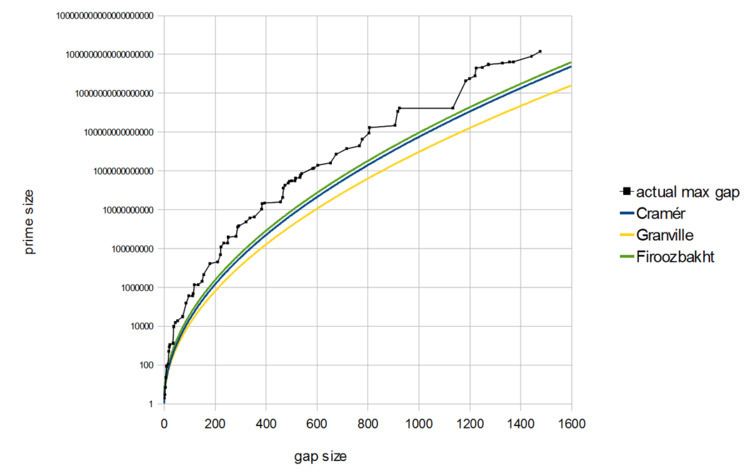 | ||
In number theory, Cramér's conjecture, formulated by the Swedish mathematician Harald Cramér in 1936, is an estimate for the size of gaps between consecutive prime numbers: intuitively, that gaps between consecutive primes are always small, and the conjecture quantifies asymptotically just how small they must be. It states that
Contents
- Conditional proven results on prime gaps
- Heuristic justification
- Related conjectures and heuristics
- References
where pn denotes the nth prime number, O is big O notation, and "log" is the natural logarithm. While this is the statement explicitly conjectured by Cramér, his argument actually supports the stronger statement
and this formulation is often called Cramér's conjecture in the literature. However, this stronger formulation is not supported by more accurate heuristic models, which nevertheless support the first version of Cramér's conjecture.
Neither form of Cramér's conjecture has yet been proven or disproven.
Conditional proven results on prime gaps
Cramér gave a conditional proof of the much weaker statement that
on the assumption of the Riemann hypothesis. The best known unconditional bound is
due to Baker, Harman, and Pintze.
In the other direction, E. Westzynthius proved in 1931 that prime gaps grow more than logarithmically. That is,
His result was improved by R. A. Rankin, who proved that
Paul Erdős conjectured that the left-hand side of the above formula is equal to infinity, and this was proven in 2014 by Kevin Ford, Ben Green, Sergei Konyagin, and Terence Tao.
Heuristic justification
Cramér's conjecture is based on a probabilistic model (essentially a heuristic) of the primes, in which one assumes that the probability of a natural number of size x being prime is 1/log x. This is known as the Cramér model of the primes.
In the Cramér random model,
with probability one. However, as pointed out by Andrew Granville, Maier's theorem shows that the Cramér random model does not adequately describe the distribution of primes on short intervals, and a refinement of Cramér's model taking into account divisibility by small primes suggests that
Related conjectures and heuristics
Daniel Shanks conjectured the following asymptotic equality for record gaps:
In the paper J.H. Cadwell has proposed the formula for the maximal gaps:
Thomas Nicely has calculated many large prime gaps. He measures the quality of fit to Cramér's conjecture by measuring the ratio
He writes, “For the largest known maximal gaps,
